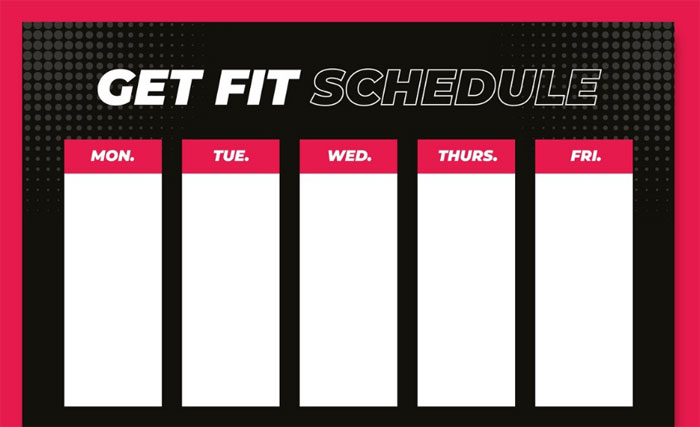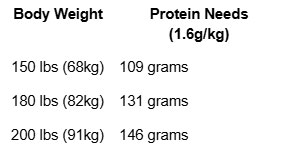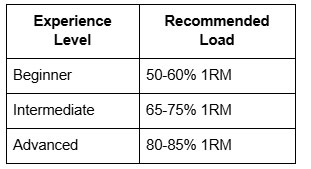Building Muscle After 40: Your Path to Strength

Age is just a number, but your strength defines your future. Many believe staying fit becomes harder past 40, but that’s a myth worth crushing. With the right strategy, you can still build muscle and dominate your fitness goals.
Sarcopenia-the natural loss of muscle mass-doesn’t have to win. Through disciplined resistance training and smart recovery, you can fight back. Your body is resilient, and with a tactical approach, you’ll stay battle-ready for years to come.
This isn’t just about looks. It’s about longevity, power, and proving that determination outlasts time. Define your mission, lock in your plan, and let’s move forward-stronger than ever.
Key Takeaways
- Age doesn’t limit your ability to gain strength-your strategy does.
- Combat muscle loss with focused resistance training and recovery.
- Your mindset determines success-commit to the long-term mission.
- Prioritize functional fitness to stay agile and powerful.
- Nutrition and consistency are your strongest allies.
Why Building Muscle After 40 Matters More Than Ever

Strength isn’t optional-it’s your shield against aging’s silent battles. Research shows adults lose 3-8% of muscle mass per decade starting at 30. By 40, the stakes skyrocket.
Sarcopenia-the stealthy thief of strength-increases fall mortality risk by 50%. But you’re not defenseless. Here’s why every rep counts:
- Defend against attrition: Combat sarcopenia with resistance training. Your health depends on it.
- Fortify your frame: Stronger muscles protect bones from osteoporosis and joints from decay.
- Fuel your metabolism: Hormonal shifts make fat gain easier. More muscle mass = higher calorie burn.
- Stay battle-ready: Functional strength ensures you’re prepared for emergencies-or just lifting groceries.
- Preserve independence: Quality of life hinges on mobility. Don’t let age dictate your limits.
This isn’t just about looking strong. It’s about outlasting time with unshakable resilience. Your mission starts now.
The Science Behind Muscle Growth After 40
Your body’s ability to grow stronger doesn’t vanish at 40-it evolves. Biological changes demand a smarter approach, but they’re no match for targeted action. Here’s how to turn science into strength.
Understanding Sarcopenia
Sarcopenia-the stealthy loss of muscle mass-accelerates after 30. By 70, protein synthesis efficiency drops 30%. But this isn’t surrender territory. Resistance training and strategic nutrition can slow the siege.
How Hormones Affect Muscle Building
Hormones dictate your gains. Men face 1% annual testosterone declines post-30; women lose 50% estrogen post-menopause. Counterattack with:
- Compound lifts to spike testosterone naturally.
- Leucine-rich protein to trigger muscle repair.
- Sleep optimization to balance cortisol.
The Role of Protein Synthesis

Protein is your reconstruction crew. Older bodies need 30–40g per meal to maximize synthesis. Time intake post-workout and at breakfast to exploit metabolic windows.
This isn’t just biology-it’s a battle plan. Outflank muscle growth barriers with science-backed tactics, and your strength will defy the calendar.
Essential Strength Training Principles for Men and Women Over 40
Your battlefield shifts after 40, but the mission remains the same-dominate. Strength training isn’t just about lifting weights; it’s a calculated defense against time. Here’s how to train smarter, not harder.
Compound vs. Isolation Exercises

Deploy multi-joint maneuvers like squats and presses as your frontline. They recruit more muscle fibers, boosting efficiency. Use isolation exercises (bicep curls, leg extensions) for precision strikes on weak points.
Balance is key: 80% compound lifts, 20% isolation. This maximizes hormonal response while minimizing joint stress.
Moderate Loads and Rep Ranges
ACSM recommends 8–12 reps at 70–85% of your 1-rep max for beginners. A 2015 review found 3 sets of 7–9 reps at 51–69% 1RM optimal for longevity.
Keep 3–4 reps “in reserve” to avoid burnout. Your joints will thank you.
The Importance of Progressive Overload

Advance your position systematically. Add 2.5–5 lbs weekly or increase workouts by 1 rep per set. Track progress like a mission log-every small win counts.
Pro tip: Deload every 4–6 weeks. Reduce volume by 30% to let your body regroup.
"The body adapts to stress-but only if you escalate the challenge."
- Execute 2–3 weekly strength training sessions for steady gains.
- Prioritize form over ego lifts-your future self depends on it.
- Fuel recovery with protein within 30 minutes post-workouts.
Best Exercises to Build Muscle After 40
Your mission to reclaim strength starts with battle-tested movements. Research from Tonal's Ageless Strength program confirms: functional patterns outperform isolation drills for lifelong fitness. These exercises are your tactical toolkit-designed to fortify weak points while protecting joints.
Upper Body: Pushups, Pull-ups, and Overhead Presses

Assault your upper fortifications with multi-angle strikes. Modified pushups reduce wrist strain by 40% while still engaging chest and triceps. Pair them with pull-ups (or band-assisted variations) to dominate back development.
For shoulder resilience, dumbbell overhead presses outperform machines. They activate 20% more stabilizer muscles according to ACE Fitness data. Execute 3 sets of 8–12 reps in your workouts for optimal growth.
Lower Body: Squats, Lunges, and Deadlifts
Storm lower-body strongholds with goblet squats-they reduce spinal load by 30% compared to back squats. Trap bar deadlifts offer similar advantages, minimizing shear forces on vertebrae.
Lunges in all directions (forward, reverse, lateral) build athleticism. A 2021 study showed they improve balance 2x faster than leg presses. Deploy these movements 2x weekly for lasting power.
Core and Stability Movements
Reinforce your midsection with anti-rotation drills like Pallof presses. Planks become 40% more effective when performed with shoulder taps-your obliques get double the activation.
For joint-friendly options, cable machines and resistance bands allow tension modulation. Remember: A rock-solid core amplifies every other exercise in your arsenal.
"Functional strength isn’t built in gym mirrors-it’s forged through purposeful movements."
- Rotate exercises every 4–6 weeks to prevent adaptation plateaus
- Prioritize full range of motion over weight lifted
- Integrate mobility drills between sets for active recovery
How to Structure Your Workout Routine

Your battle plan requires structure-precision beats brute force every time. A strategic routine is critical to outmaneuver plateaus and protect joints. Science backs this: 3 weekly sessions optimize growth while allowing for recovery.
Frequency and Volume
Deploy full-body assaults 3x per week for maximum efficiency. Research shows this frequency spikes protein synthesis without overtaxing your system. Each session should last 45–60 minutes-long enough to ignite growth, short enough to avoid burnout.
Volume is your ammunition. Aim for 10–15 sets per muscle group weekly. Split them evenly across days to maintain momentum. Example:
- Monday: Squats (4 sets), rows (3 sets), pushups (3 sets)
- Wednesday: Deadlifts (3 sets), overhead presses (3 sets), lunges (3 sets)
- Friday: Bench press (3 sets), pull-ups (3 sets), core drills (3 sets)
Splitting Your Workouts
Upper/lower splits work for advanced operatives. Alternate between zones to focus firepower:
- Day 1: Upper body (push/pull)
- Day 2: Lower body + core
- Day 3: Full-body metabolic drills
New recruits should stick to full-body routines. They build foundational strength faster.
Incorporating Active Recovery
Rest days are strategic, not weak. Active recovery-like yoga or swimming-boosts blood flow by 25% (AHA data). Schedule these between battles to accelerate repair.
"Recovery isn’t downtime-it’s stealthy reloading for your next mission."
Log every rep in your training dossier. Adjust tactics weekly. Victory favors the prepared.
Recovery Strategies for Optimal Muscle Growth
Victory isn’t just earned in the gym-it’s secured during recovery. Your ability to rebuild determines long-term success. Without proper downtime, even elite training becomes wasted effort.
The Role of Sleep in Recovery

Sleep is your secret weapon. A 2023 JAMDA study proved risk. Aim for 7–9 hours nightly to maximize tissue repair and growth hormone release.
Pro tips for sleep dominance:
- Blackout your room-even small light leaks disrupt melatonin.
- Cool your environment to 65°F for deeper REM cycles.
- Power down screens 90 minutes before recon missions.
Active Recovery Techniques
Movement accelerates healing. Low-impact activities boost circulation without overtaxing your system:
- Foam rolling breaks fascial adhesions-30 sec per muscle group.
- Yoga flows maintain mobility while lowering cortisol.
- Swimming provides resistance without joint impact.
"Recovery isn’t passive-it’s active preparation for your next battle."
Managing Inflammation and Oxidative Stress

Post-workout firefights require smart suppression tactics:
- Cold plunges (55°F for 3 min) slash inflammation markers by 30%.
- Turmeric and omega-3s act as natural NSAIDs.
- Hydration flushes metabolic debris-aim for 0.6oz per pound daily.
Schedule deload weeks every 6–8 cycles. Reduce volume by 30% to let your body reset. This isn’t retreat-it’s strategic repositioning.
Nutrition for Building Muscle After 40
Fueling your body right is non-negotiable for maintaining combat readiness. Your nutrition strategy determines whether you gain ground or surrender to time. Research proves those over 40 need smarter fueling tactics to preserve lean mass.
Protein Intake Guidelines

Consider protein your reconstruction crew. Studies show 1.6g per kilogram body weight maintains muscle better than lower intakes. For a 180lb operative, that's 130g daily minimum.
Divide your daily protein across 4-5 meals. This keeps amino acids flowing to repair tissues all day. Whey isolate post-workout delivers rapid absorption when muscles need it most.
Balancing Macronutrients
Carbs and fats aren't enemies-they're fuel reserves. Follow this tactical distribution:
- 40% protein: Foundation for repair and growth
- 30% carbs: Energy for training missions
- 30% fats: Hormone production and joint health
Time carb intake around workouts. Sweet potatoes and oats provide sustained energy without blood sugar spikes.
Supplements That Can Help

These reinforcements give you the edge:
- Creatine: Boosts strength gains by 15% (2019 Journal of Strength and Conditioning Research)
- Whey protein: Fast-digesting protein for critical recovery windows
- Omega-3s: Reduce inflammation by 20% (American Journal of Clinical Nutrition)
"You can't out-train poor nutrition-your fork is mightier than your squat."
Hydration matters too. Drink half your body weight in ounces daily. Water transports nutrients to muscles and flushes metabolic waste.
Common Mistakes to Avoid When Building Muscle After 40
The path to strength after 40 has hidden traps-here's how to navigate them. Even elite operatives commit tactical errors that sabotage progress. These battlefield mistakes increase risk while delivering minimal gains. Learn them now to protect your mission.
Lifting Too Heavy Too Soon
Ego-lifting is friendly fire to your joints. A 2021 study showed heavy barbell lifts increase joint stress by 40%. Your tendons need gradual conditioning-like special forces preparing for deployment.
Follow this progression protocol:

Key survival tactics:
- Master form before adding weights
- Increase load by 5% weekly max
- Use spotters for max-effort attempts
Skipping Warm-Ups and Cool-Downs

Neglecting prep work is like charging into battle without armor. AHA research proves proper warm-ups slash injury risk by 50%. Your body needs mobilization drills to activate neural pathways.
Essential pre-mission routine:
- 5-minute dynamic stretching (leg swings, arm circles)
- 2 sets of 10 reps with 30% working weight
- Joint rotations for wrists, shoulders, and hips
"Cold muscles tear-warmed muscles perform. Never skip your armor-up sequence."
Neglecting Mobility and Flexibility
Strength without suppleness is a ticking time bomb. Limited range of motion forces compensatory movements that spike risk. Balance your strength operations with these mobility missions:
- Daily 10-minute yoga flows for spinal decompression
- Foam rolling after sessions to prevent fascial adhesions
- Active recovery days with swimming or cycling
Don't forget cardio reconnaissance. Two weekly 20-minute sessions maintain vascular health without stealing gains. Your heart is the command center-keep it battle-ready.
Heed these warnings, and you'll avoid the pitfalls that derail most operations. Stay sharp, soldier.
Staying Motivated and Consistent
Victory belongs to those who refuse to quit-your persistence defines success. IHRSA reports 65% of men abandon gyms after 34. But you're different. This isn't about short bursts of effort. It's about strategic, sustained campaigns that outlast time.
Setting Achievable Objectives
SMART goals win wars. Vague plans like "get stronger" fail 92% more often than specific targets (Journal of Sports Science). Your mission parameters need precision:

Start small. Harvard research shows those who set incremental goals maintain routines 3x longer. Celebrate every forward advance-even 5 extra pounds lifted counts.
Measuring Your Advancements

What gets tracked gets conquered. A 2022 study proved progress logging increases adherence by 40%. Your tactical dossier should include:
- Workout logs (weights, reps, rest periods)
- Weekly body measurements (tape beats scale)
- Energy levels and recovery speed
Review data monthly. Patterns reveal what's working-and what needs extraction. Time distorts memory; paper doesn't lie.
Building Your Fitness Platoon
Lone wolves get picked off. Research confirms training partners boost consistency by 57%. Assemble your unit with these recruits:
- Accountability partners (check-in texts work)
- Knowledgeable coaches (avoid self-proclaimed gurus)
- Online communities (vetted groups only)
"The strongest warriors surround themselves with those who refuse to let them quit."
When motivation wanes-and it will-your platoon becomes the reinforcements you need. This is how lifelong men of strength operate.
Conclusion
Time tests your resolve, but discipline outlasts the clock. This journey isn’t about defying age-it’s about rewriting the rules. Your body is your ally, not your adversary.
True strength is longevity. Prioritize your health like a mission-critical objective. Every workout is an investment in your life-the ultimate insurance policy against decline.
Stay relentless. Report for duty. The battlefield doesn’t retire, and neither should you.
FAQ
Can you still gain strength in your 40s?
Absolutely! With smart training, proper nutrition, and recovery, you can increase strength and mass. Focus on compound movements, progressive overload, and protein intake (1.6-2.2g per kilogram body weight daily).
How often should I train for muscle growth?
Aim for 3-5 resistance sessions weekly. Split workouts between upper/lower or full-body routines. Prioritize quality over quantity-recovery is key.
What’s the best protein intake for men over 40?
Consume 1.6-2.2g per kilogram body weight daily. Spread intake across meals to maximize protein synthesis. Lean meats, eggs, and plant-based options work.
Should I lift heavy or do high reps?
Both! Use moderate loads (70-85% 1RM) for 6-12 reps to balance strength and hypertrophy. Include power movements like deadlifts and presses.
How important is sleep for recovery?
Critical. Aim for 7-9 hours nightly. Sleep boosts growth hormone, repairs tissue, and enhances performance. Prioritize it like your workouts.
Are supplements necessary after 40?
Not essential, but helpful. Consider creatine (5g/day), omega-3s, and vitamin D. Always prioritize whole foods first.
How do I avoid injuries when lifting?
Warm up dynamically, master form, and progress gradually. Include mobility work and listen to your body-pain isn’t gain.
Can cardio interfere with muscle growth?
Not if balanced. Limit excessive steady-state cardio. Opt for sprints or incline walks 2-3x weekly to preserve gains.




